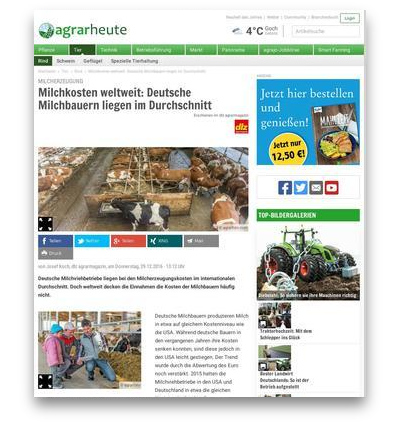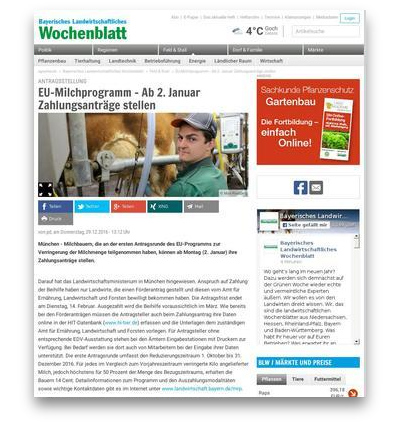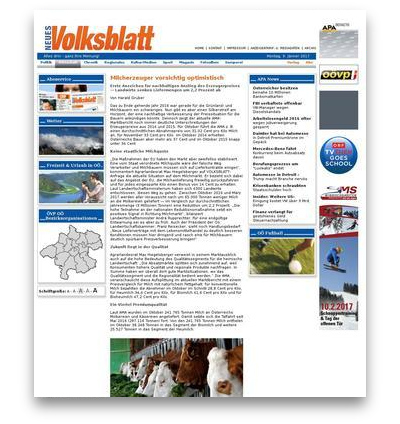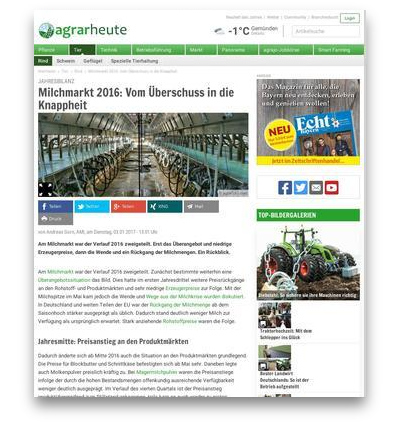
Milk costs worldwide: German dairy farmers are average
German dairy farmers produce milk at roughly the same cost level as the USA. While German farmers have been able to reduce their costs in recent years, these have risen slightly in the USA. The trend has been reinforced by the devaluation of the euro. In 2015, dairy farms in the USA and Germany had roughly the same costs, as the latest annual analysis by the IFCN, the international dairy research network, shows. And this is also on the horizon for 2016, albeit at a lower level. source: agrarheute.com

EU milk programme - submit payment applications from 2 January
Munich - Dairy farmers who took part in the first application round of the EU milk volume reduction programme can submit their payment applications from Monday (2 January) Source: agrarheute.com

Milk producers cautiously optimistic
The end of 2016 was a difficult year for grassland and dairy farmers in particular. However, there is now a silver lining on the horizon that could herald a sustainable improvement in the price situation for farmers. Nevertheless, the current AMA market report still shows significant undercutting of producer prices from 2014 and 2015. For October, for example, the AMA lists an average purchase price of 31.02 cents per kilo of milk, and 33 cents per kilo for November. However, Austrian farmers received more than 37 cents in October 2014 and just under 34 cents in October 2015. source: Neues Volksblatt

Milk market 2016: From surplus to shortage
The dairy market developed in two directions in 2016. Initially, an oversupply situation continued to dominate the picture. This resulted in further price declines on the raw material and product markets and very low producer prices in the first third of the year. However, the turnaround came with the milk peak in May and ways out of the milk crisis were discussed. In Germany and large parts of the EU, the decline in milk volumes from the seasonal peak was more pronounced than usual. As a result, significantly less milk was available than originally expected. The result was a sharp rise in commodity prices. source: agrarheute.com


